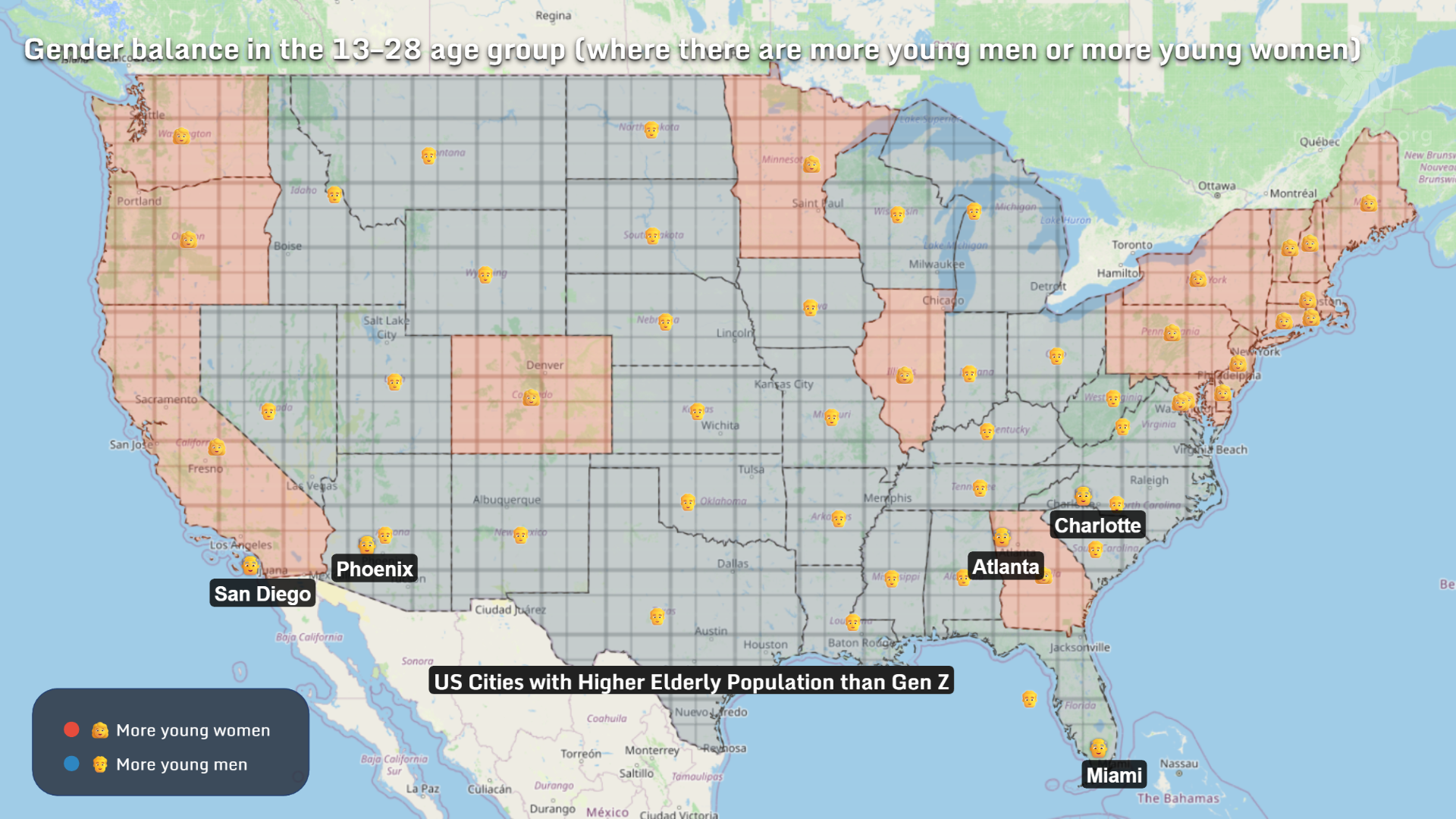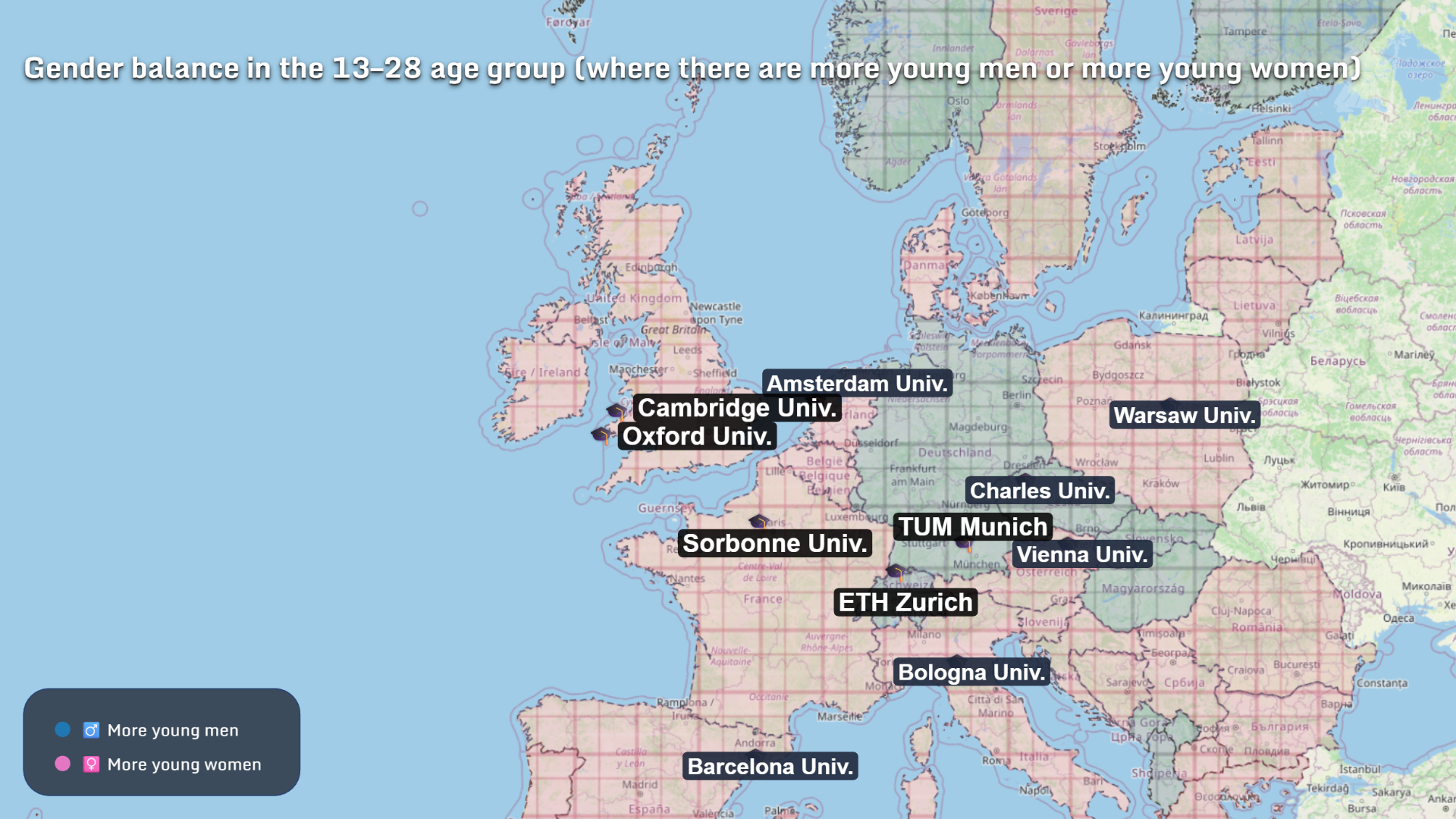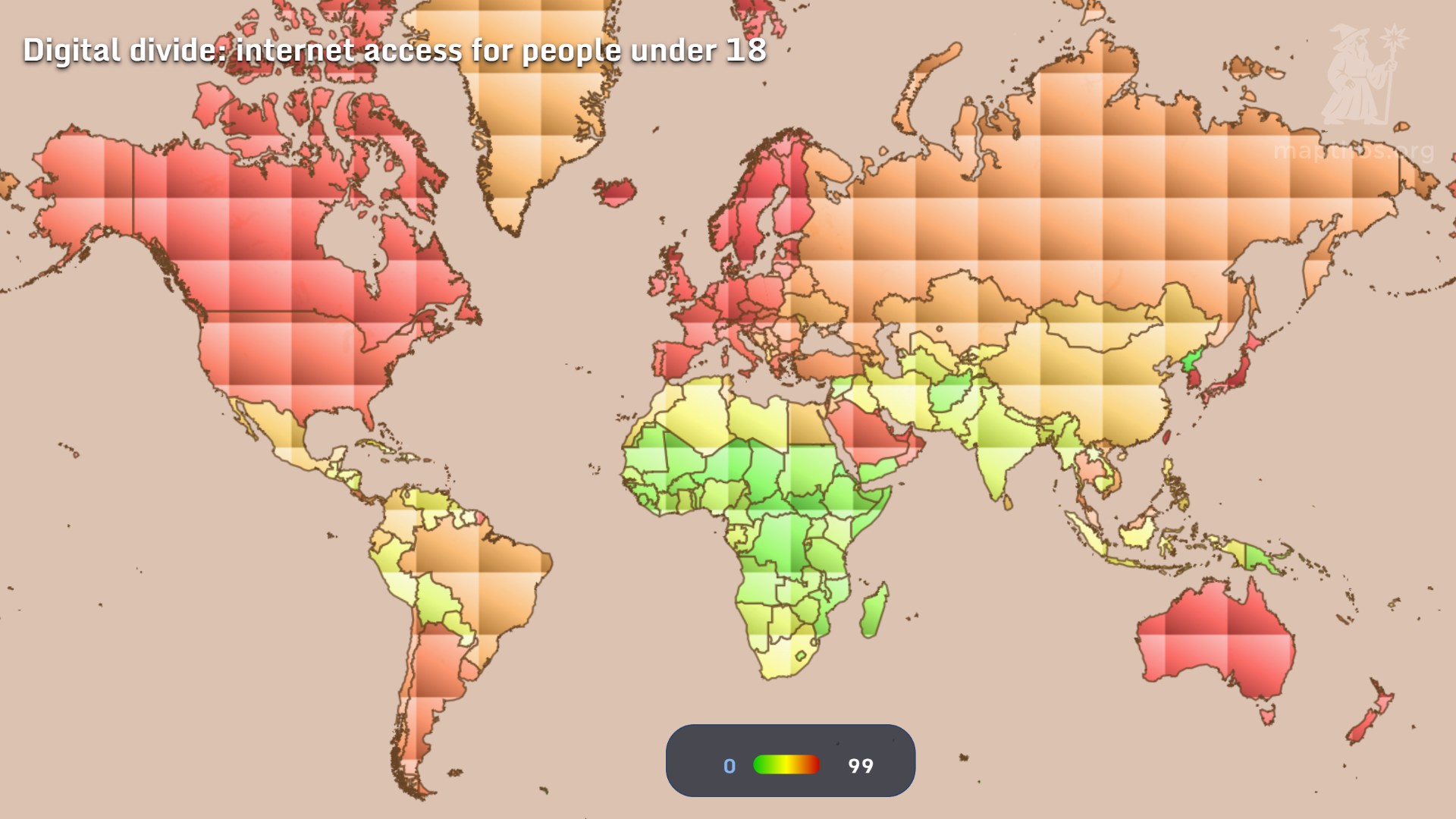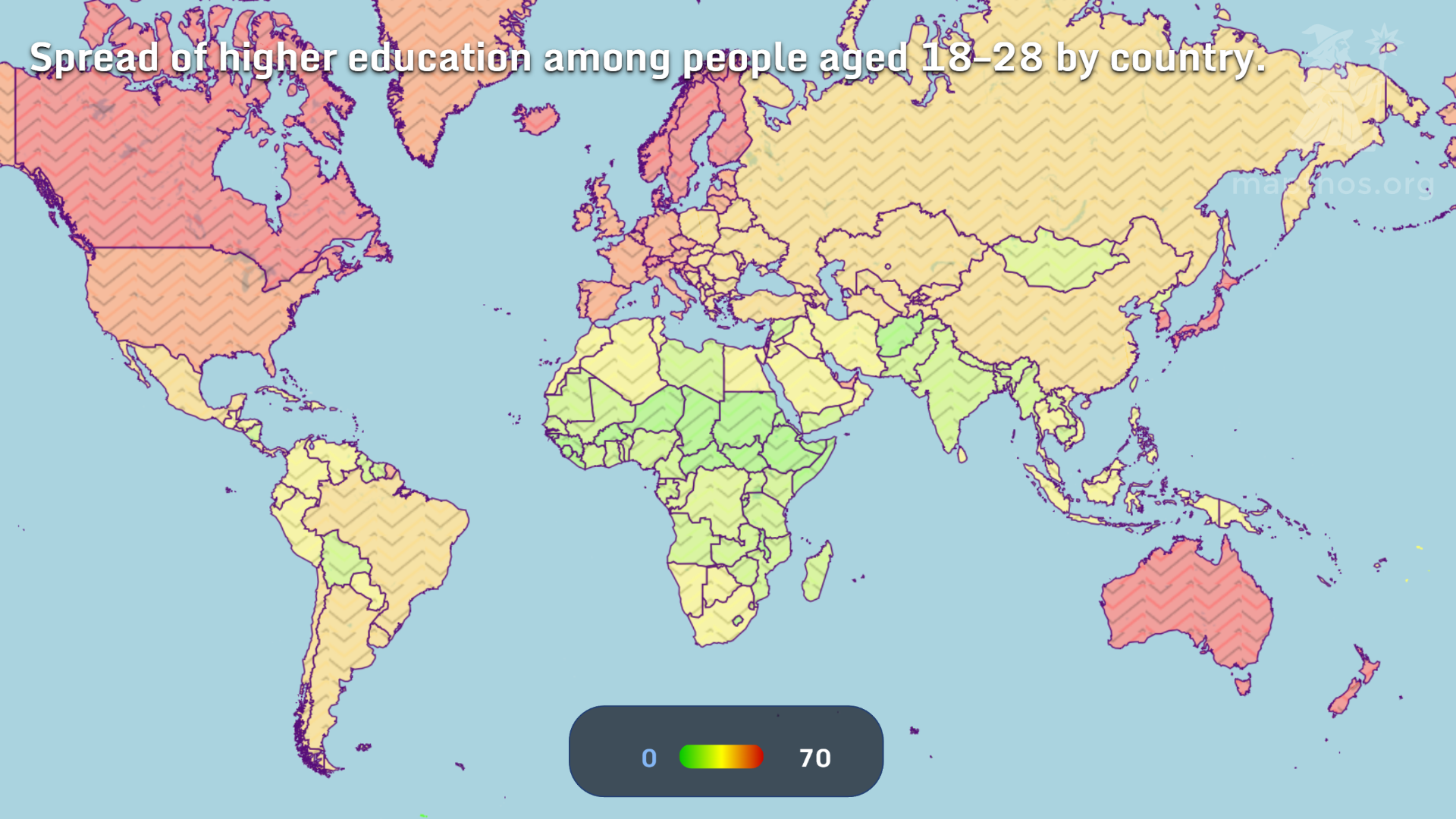🌍 Mapping Global Youth in 2025 — Gender, Digital Access & Education

Youth shape the future long before they enter the workforce. But their opportunities — from gender balance to online access to higher education — are unevenly distributed across the world.
Using MAPTHOS, we explore three structural forces defining the global generation aged 13–28: gender distribution, the digital divide, and access to higher education.
👥 The Geography of Gender Balance in the USA (Ages 13–28)

The U.S. map reveals a subtle but meaningful demographic pattern: regions with more young women cluster on the coasts and the Northeast, while young men slightly dominate parts of the Midwest and the Mountain states.
Cities like Miami, Charlotte, Atlanta, and San Diego stand out with demographic footprints shaped by universities, migration, and economic hubs.
These differences — even when small — influence labor markets, education demand, and long-term regional development.
🎓 Gender Balance Across Europe’s University Regions

Europe tells a different story: University regions — Oxford, Cambridge, Amsterdam, Charles University, TUM Munich, ETH Zurich, and others — often show higher concentrations of young women, reflecting enrollment patterns in humanities, medicine, and the social sciences.
Central Europe and parts of the Balkans remain more balanced or slightly male-leaning, influenced by engineering and vocational programs.
MAPTHOS visualization highlights how education ecosystems shape demographic geography, sometimes more than national borders do.
🌐 Digital Divide: Internet Access for Youth Under 18

If gender shapes opportunity, digital access defines participation.
This global map exposes deep contrasts:
- High-access regions: Japan, Western Europe, Australia, North America
- Mid-access regions: Latin America, Southeast Asia
- Low-access regions: Central Africa, parts of South Asia
MAPTHOS heatmaps make these inequalities immediately visible and measurable.
🎒 Higher Education Among Young Adults (18–28)

Higher education is expanding globally — but unevenly.
- High-participation countries: South Korea, Japan, Canada, UK, Nordic states
- Mid-levels: Eastern Europe, Latin America
- Growing but limited access: South Asia, Middle East
- Severely constrained: Sub-Saharan Africa
MAPTHOS makes these multi-layered correlations intuitive to explore.
✍️ Conclusion
Youth data is not just demographic — it is destiny. These maps show how opportunity is distributed, how education reshapes regions, and how digital access is emerging as the primary global divide of the 2020s.
With MAPTHOS, the world’s most important generation becomes visible — country by country, region by region, story by story.
👉 Explore more at app.mapthos.org
See the world. Map better. Dream big. 🌍✨